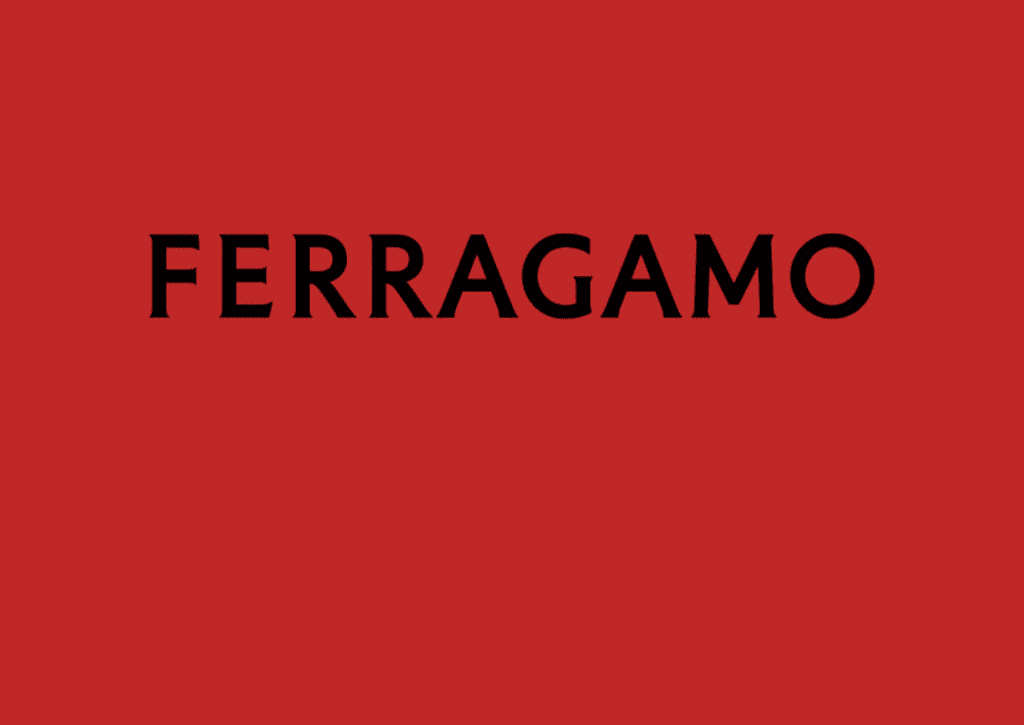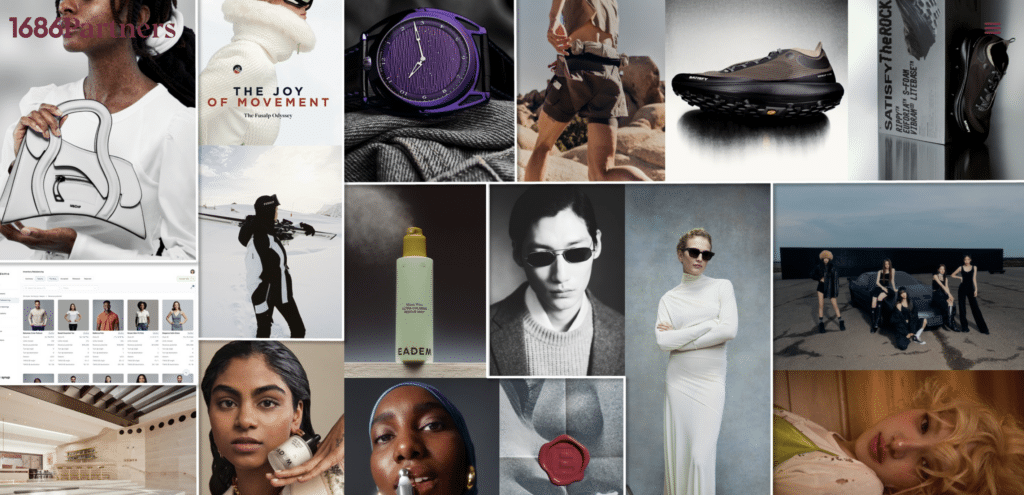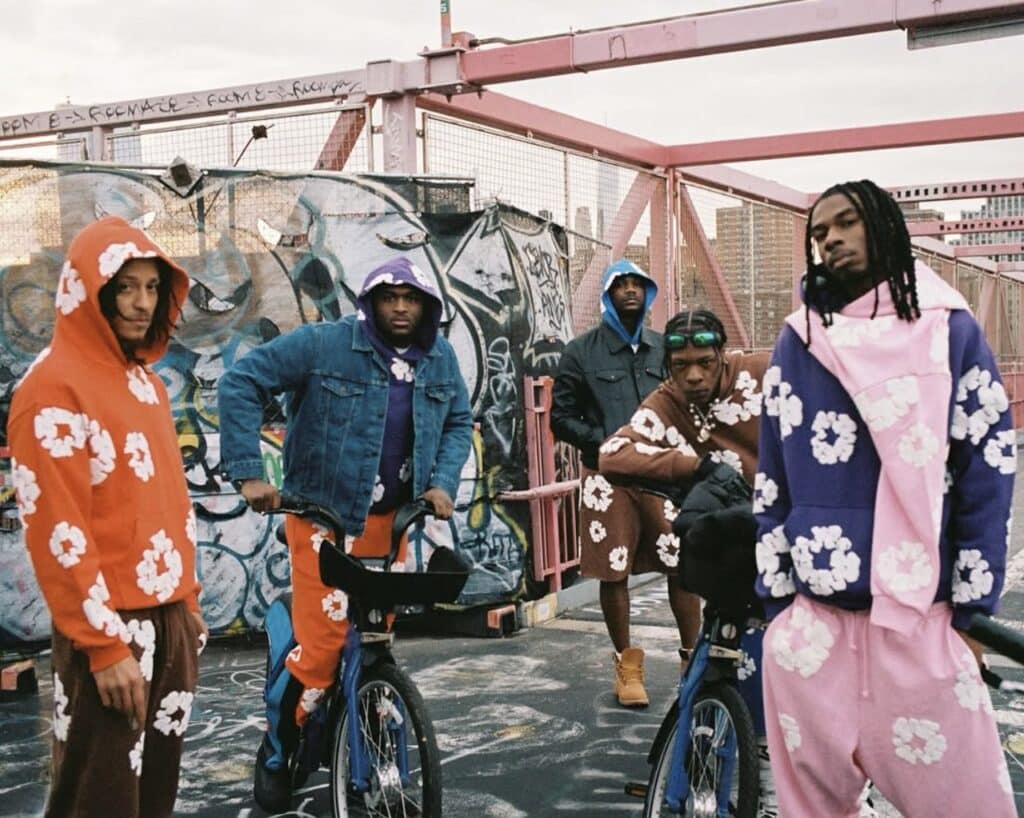In an Instagram post from Salvatore Ferragamo on Wednesday, the Italian leather goods and fashion brand announced that “Salvatore Ferragamo [has] become FERRAGAMO.” The revelation – which also included a subtly-stylized new word mark and a custom red-ish Pantone hue – comes on the heels of the appointment of 27-year-old Maximilian Davis in March to the helm of the Florence, Italy-headquartered brand and just ahead of his runway debut during Milan Fashion Week on Saturday. In addition to reflecting a number of recurring trends in branding (from the rising adoption of color marks and moves by companies to simplify their brand names), Ferragamo axing Salvatore and the cursive stylization of its previous mark and opting, instead, for a more pared back font, is a nod to the “blanding” trend that has found a home in the fashion/luxury goods space over the past several years.
The newly-introduced Ferragamo word mark and the 95-year-old company’s decision to bring the red hue (which has roots in the company’s branding to date) to the fore falls neatly in line with enduring trends in the realm of branding. Other companies are placing emphasis on signature shades to complement more traditional forms of source-indication, such as word marks and logos. Bottega Veneta’s green, Valentino’s PP Pink, and Tom Brady’s “Brady Blue” come to mind as recent examples. In addition to adopting color branding, Ferragamo’s decision to move away from its previous signature-style mark is not without precedent either, and is immediately demonstrative of the “blanding” movement.
Still yet, Salvatore Ferragamo leaning into a shortened moniker is not uncharted territory, as it follows from similar steps taken by the likes of Ermenegildo Zegna, Hugo Boss, and Yves Saint Laurent. Fellow Italian fashion brand Ermenegildo Zegna became Zegna (and debuted a new logo) in December 2021. Shortly thereafter, Hugo Boss announced that it would split its formerly unified brand and create two distinct brands – HUGO and BOSS. And best known, of course, was a move by Yves Saint Laurent – under the watch of former creative chief Hedi Slimane – to famously drop the “Yves” for the ready-to-wear collection brand. (It is worth noting that this trend is not limited to fashion, and companies like The Boca Raton (formerly The Boca Raton Resort & Club) have simplified their names, as well.)
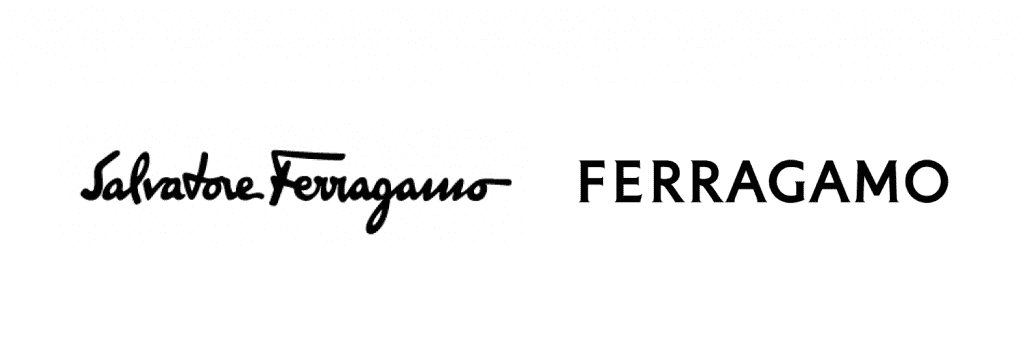
It is clear that companies across the board are opting to operate under more simplified branding, with a notable number of big-name bands following a very similar formula in recent years. The question is: Why? There are an array of reasons driving this branding stint but at least a couple stand out. Primarily, there is the enduring need for companies to create buzz around themselves – whether that buzz be for general brand-promotion purposes or to indicate new endeavors. This is very-easily achieved by way of changes to their branding)
In connection with its recent rebrand, Hugo Boss, for instance, is angling to regain relevance and in turn, boost sales. While the German fashion brand has “maintained its brand awareness” in recent years, CEO Daniel Grieder said earlier this year that it has “lost its relevance in the fashion industry,” prompting management to go back to the drawing board and “reframe” the valuable brand. Against that background, the bifurcated BOSS brand is aimed at catering to millennial consumers (think: ages 25 to 40), whereas HUGO is looking to find its footing among Gen-Z (i.e., those under age 25).
Zegna similarly revamped its branding not too long ago as an indication of what is to come, namely, a planned initial public offering this year by way of a SPAC and a larger plan to engage in global expansion.
Other companies have opted to rebrand – or better yet, de-brand (complete with wiped-clean social media accounts) – to signal the start of a new creative direction. The Saint Laurent rebrand, for instance, coincided closely with the start of Hedi Slimane’s tenure, and the same is true for Ferragamo, which onboarded both Davis and CEO Marco Gobbetti over the past year, and is in the midst of a larger effort to attract millennial and Gen-Z consumers to the brand that has become a relatively dusty over the years.
Practically speaking, companies appear to have become much more willing to play with their valuable branding than they have been in the past. As a result, alterations to companies’ branding that follow from changes in creative directors – or that foreshadow other changes for a company – have become thoroughly commonplace, a sure-fire way to elicit clicks (and potentially, cash) from consumers. “Wrongly, or rightly, this has almost become the de-fecto way a traditional luxury brand communicates that they are having a bit of a rebirth and is still relevant and that it wants consumers to look at its offering with a bit more of a modern lens,” King & Partners founder and CEO Tony King told TFL. “It is almost a battle cry for luxury brands to signal to the world, ‘Hey kids, look at us! We still got it!’”
Beyond the need to create recurring buzz in a crowded and largely-image-driven luxury market, branding changes are a way for companies to adapt to a growing number of markets and mediums, which have increased even further since the initial wave of blanding thanks to the rise of web3 and the metaverse. In addition to seeking “maximum impact” across the mediums where they simultaneously communicate – from smartphones to billboards, Base Design’s Partner and Executive Creative Director Thierry Brunfaut says that “most of these brands are global brands, and they believe that they need to get to the lowest visual and textual common denominator to reach a global audience.”
The line of thinking here, per Brunfaut, is that “the shorter and bolder your name is” the more widely fitting it is and “the better the impact.” And ultimately, replacing stylized branding “with something bolder, simpler” enables brands to “pass the ‘Will this be highly recognizable on a hoodie?’ test,” King asserts. (He notes that the simplification of a brand name also sets companies like Ferragamo up neatly to use the dropped portion of a name for a diffusion or separate line.)
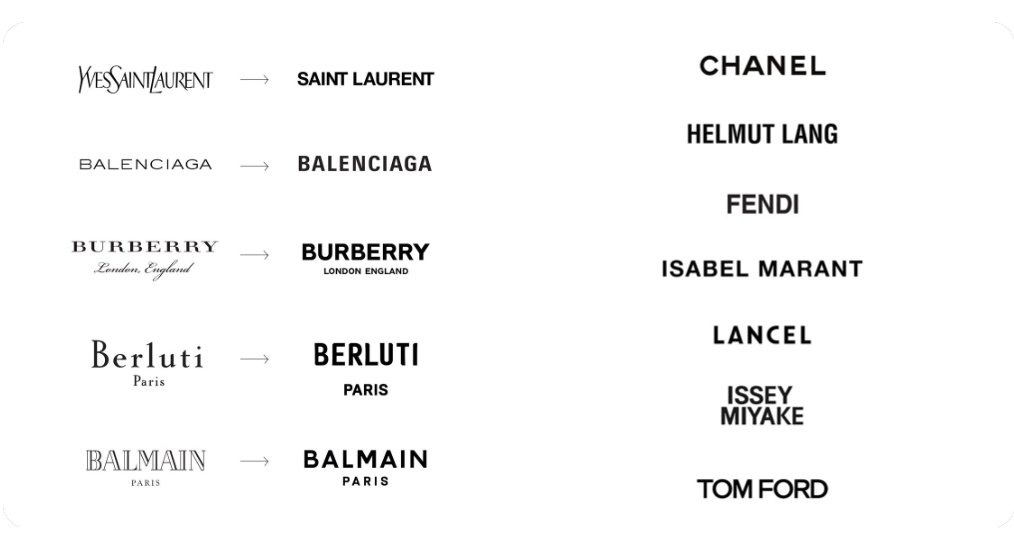
Such de-branding – which is seeing brands “extract all the nuances and considered details of a brand that carefully evolved over decades,” King says, may prove to be an effective way to achieve appeal across markets and mediums, but it is not without potential drawbacks. One of the risks here, Brunfaut contends, is that such de-branding “could empty the brand of its story, heritage, and unique feel,” while at the same time, giving rise to “the danger that all these fashion mega brands today look the same,” thereby, giving consumers the impression that “luxury has become a commodity.” This might not bode well from a positioning and/or pricing point of view, which is the name of the game in the luxury segment.
Finally, from another perspective, what is going on here makes sense. In reality, most of the fashion brands that are engaging in de-branding exercises have come a long way from their origins, with their founders either dead or otherwise not involved with the company, and this fact is being reflected in the removal of “original human/family heritage” elements, Brunfaut says. The message here is “clear,” he claims, these new branding efforts represent a shift “from a person to a corporation.”
As for whether this overarching blanding (or de-branding) will stick – and/or whether it is what companies in the business of manufacturing the image of exclusivity, craftsmanship, and … luxury will want – long-term is not immediately clear. However, Brunfaut, for one, suggests that this may not be the end of the luxury brand as we once knew it.
It is “all about cycles” when it comes to branding. “We could be surprised by the coming of a new trend that gets back to more human-centric branding,” he says. “I think we all crave that.”







